The plot of land on the north side of Christian between 3rd and 4th Streets has been dramatically repurposed over the course of recorded history. The site’s first known use was as the Ebenezer Methodist Episcopal Church. According to Handworn, the Ebenezer Church was originally built on 2nd Street, just north of Queen, in 1790.
However, the congregation quickly outgrew its modest space. Ebenezer had originally purchased the lot between 3rd and 4th Streets in 1810 to serve as a burial ground. However, by 1819, the church relocated here as well. The image below, taken from Samuel L. Smedley’s 1862 Philadelphia Atlas, shows that the church stretched north from Christian to Queen Street.
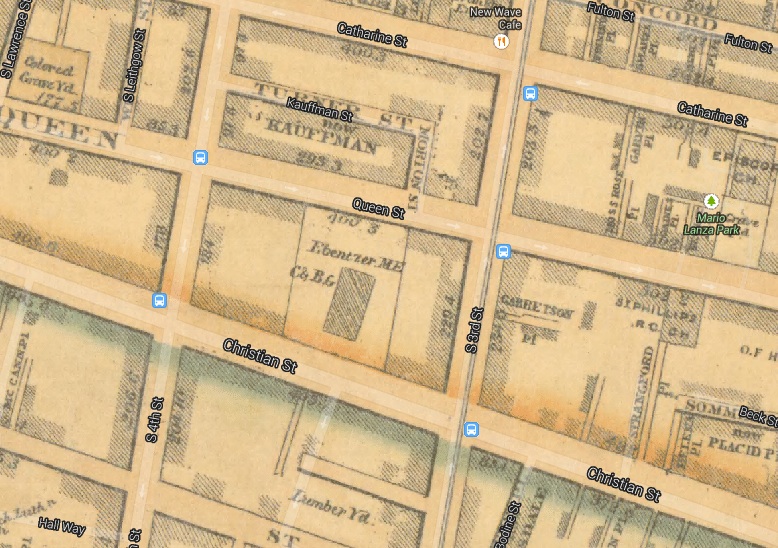
A book entitled History of Ebenezer Methodist Episcopal Church of Southwark, Philadelphia notes that while the congregation’s history is a bit convoluted, we can see that the building was either upgraded or completely replaced by a more modern church hall in 1852. The 1890 text also provides us with a sketch of the building at the time.
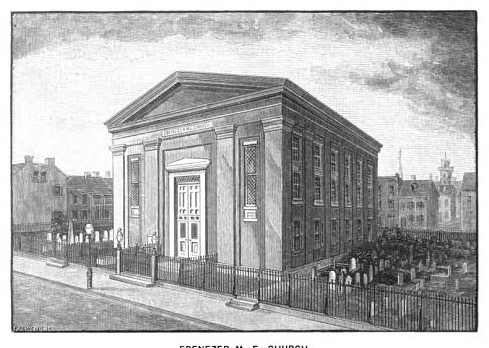
The church wouldn’t last too far beyond the publication of this retrospective. According to the Free Library of Philadelphia, the Ebenezer Church sold its lot and the Henry Burk Public School was built in its place in 1904. The school is shown here below in a 1906 photo taken from the Philadelphia Department of Records.
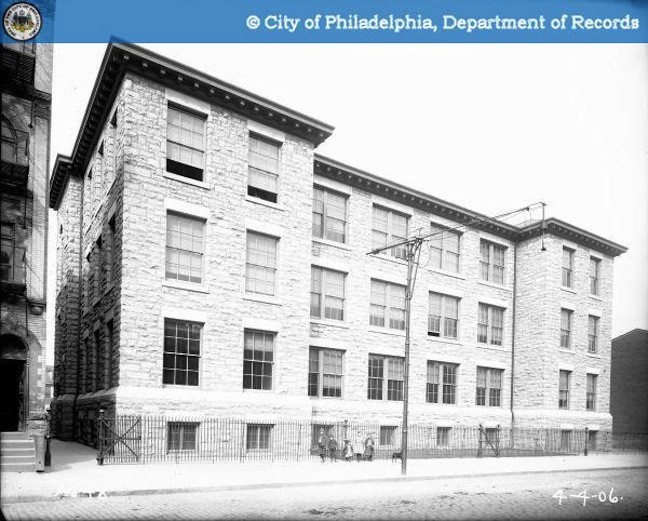
The photo here, also taken from the Department of Records, shows the school receiving a new wing in 1910.
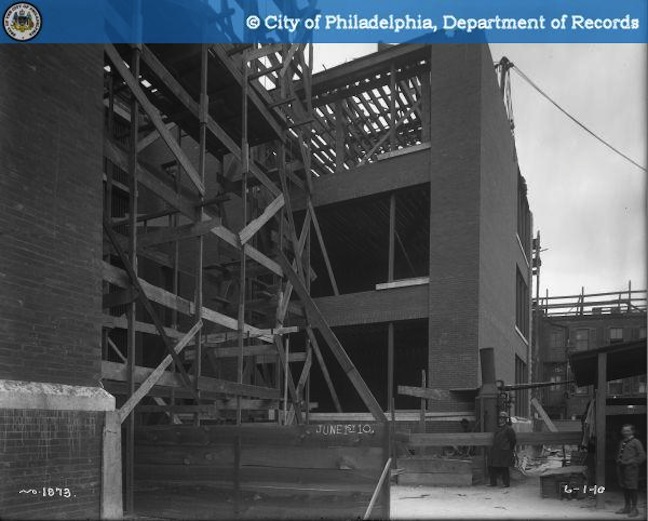
The 1913 photo here, taken from the Free Library of Philadelphia, shows the school enjoying said wing.
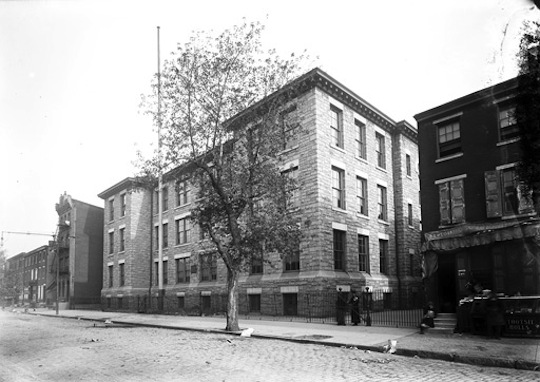
Evidence suggests that the school stood at 311-313 Christian St. at least as late as 1962. At some point over the following decade, the school was closed and demolished, leaving an empty concrete lot in its wake. In 1976, the Queen Village Neighbor’s Association, in celebration of the Bicentennial, began the process of transforming this lot into a community garden. A 1981 photo taken from the garden’s website shows one of the park’s founders, Libby Goldstein, working the grounds.
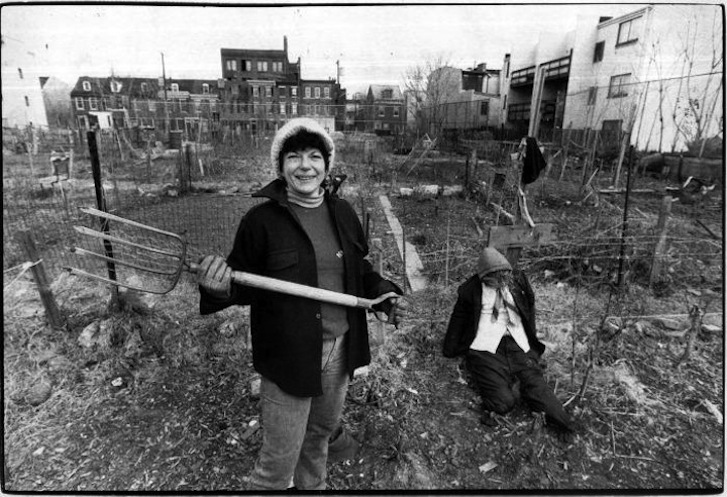
Today, the former church and school ground is a lush oasis for urban farming, flowers and foliage, boasting more than 70 plots.
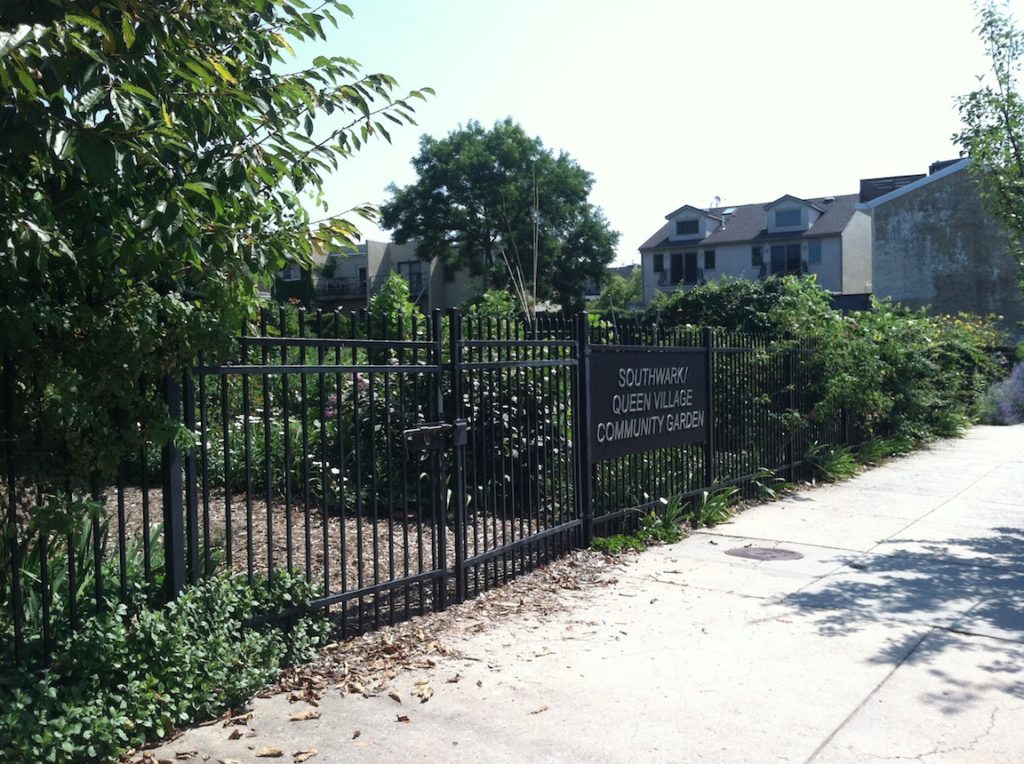

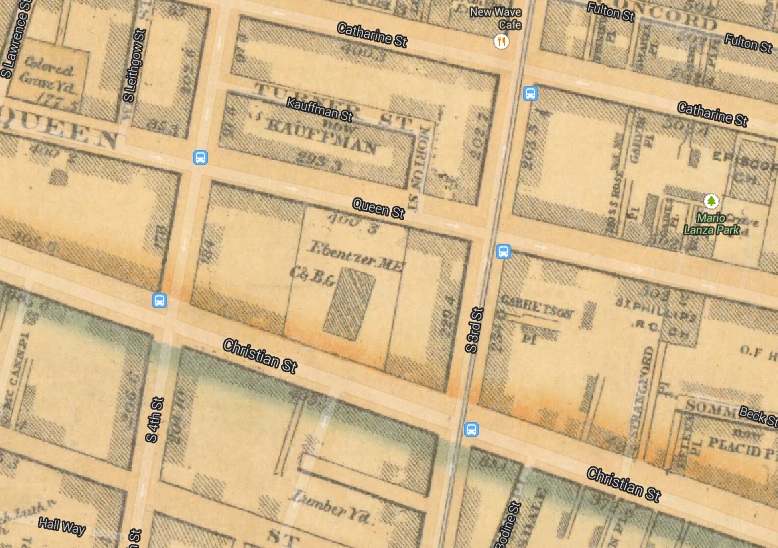
Leave a Reply